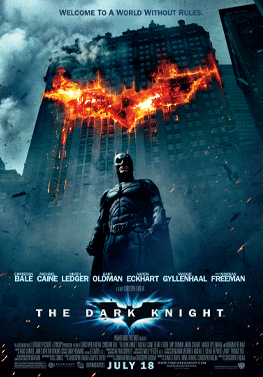
Prepare to be captivated by the powerful allure of “The Dark Knight” (2008), the timeless charm of “City Lights” (1931). And the poignant depth of “Grand Illusion” (1937). These three films stand as shining examples of cinematic brilliance, each offering a unique and unforgettable experience. In “The Dark Knight,” witness the relentless battle between Batman and the enigmatic Joker, as darkness clashes with light in a gripping tale of heroism and villainy. So here is the Top 3 Timeless Brilliance of Hollywood.
“City Lights” takes you on a heartwarming journey through the whimsical world of Charlie Chaplin’s iconic Tramp. Where love and comedy intertwine in perfect harmony. Meanwhile, “Grand Illusion” delves into the complexities of war, exploring the bonds formed by soldiers and the barriers that divide them. Together, these films showcase a diverse range of storytelling, from epic superhero sagas to silent-era comedies and profound war dramas. Join us as we embark on a cinematic adventure, where these timeless classics continue to mesmerize and inspire audiences, transcending the boundaries of time and captivating our hearts and minds.
The Dark Knight (2008)
Gotham City finds itself under the watchful gaze of a new Dark Knight as Matt Reeves’s “The Batman” emerges, setting a high standard to surpass. Christopher Nolan’s second installment in the Bat trilogy stands as an exemplary model of how to craft a refined superhero saga tailored to the sensibilities of contemporary viewers. It comes remarkably close to perfection, serving as a compelling case study in sophisticated storytelling.
The film’s only slight blemish arises from its final act. Which ambitiously attempts to weave together an abundance of ideas and moral quandaries, teetering on the edge of overwhelming the narrative with its intricate calculations. Meanwhile, Heath Ledger’s portrayal of the Joker revolutionizes the realm of on-screen villainy, demanding more than mere malevolence. Now, a sinister antagonist must possess a captivating party trick to truly captivate audiences.
City Lights (1931)
Charlie Chaplin’s creative genius continues to inspire awe as he assumes the roles of writer, director, producer, editor. And star in his own cinematic creations, complemented by his orchestral scores. Amidst this comprehensive artistic vision, one film stands out in particular: “City Lights.” In a time when the demand for sound in films was growing, Chaplin, steadfast in his mastery of visual techniques, chose to craft his new comedy as a silent masterpiece.
Unyielding to the evolving landscape of cinema, he persisted in showcasing his comedic prowess without relying on dialogue. And as always, the indomitable star had the last laugh. Not only did “City Lights” achieve tremendous commercial success. But it also culminated in one of the most heart-wrenching close-up shots in the history of the medium—an epitome of the reaction shot that has since inspired countless films, from “La Strada” to “The Purple Rose of Cairo,” all without the need for spoken words.
Grand Illusion (1937)
Revisiting one of Jean Renoir’s timeless masterpieces (alongside The Rules of the Game) is always a worthwhile endeavor. And in the midst of the current era dominated by populists, nationalists. And raucous provocateurs, it becomes even more poignant. “Grand Illusion” takes place within the confines of a German POW camp during World War I, exposing the inherent divisions of class and nationality among a community of French prisoners and their German captors. Ultimately, the film asserts that what truly counts is humanity’s capacity for nobility and compassion toward one another. It serves as a timely reminder of these enduring values, resonating deeply in our present context.
Watch Top 3 Timeless Brilliance of Hollywood on Fmovies
Also Read:
